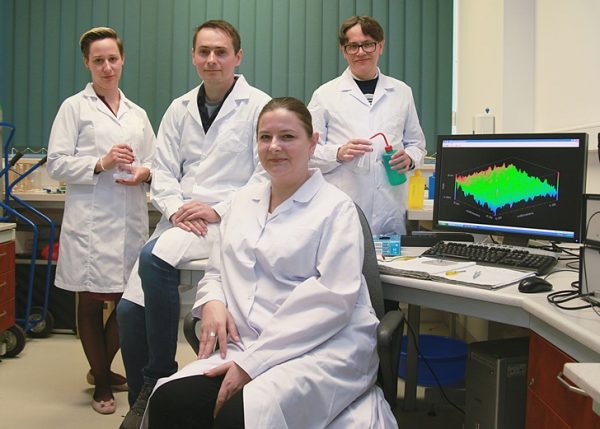The loss of teeth may occur mainly as a result of periodontal diseases. The first symptoms of chronic inflammatory condition may take place already in your thirties. It’s getting harder to maintain the complete natural teeth alignment over the age. Fortunately, the dental sector is constantly developing, offering dental implants of an increasingly better quality. Two solutions improving the quality of implant coatings have been developed by scientists from the University of Silesia in Katowice, and their inventions have been covered by patent protection.
‘Our team mostly handles materials bioengineering. We are specialised in examining and developing materials that can be used for making short- and long-term modern implants. These include e.g. hip joint endoprostheses, memory shape implants and dental implants. Due to this, we constantly cooperate with doctors and prosthetists to know what properties a modern medicinal product should have. We want it to perform its functions, be durable, friendly for human body and as cheap as possible’, says Assoc. Prof. Bożena Łosiewicz, Professor of the University of Silesia, who has studied and designed biomaterials for many years.
Scientists were contacted by a manufacturer of dental implants, who asked them to develop special coatings, thanks to which the product involved would be more resistant to scratch during its application. This is because the implant coating frequently gets damaged during the implant insertion. In this way, even up to 10% of protective layer may be lost, which obviously affects the product quality and durability.
What is more, in the case of application of dental implants, a bone bed is prepared, which must adhere closely to the implant. The damage arising on its surface may be the cause of clearance, which has a negative impact on the implantation process. It is no wonder, then, that new solutions are searched for, intended to prevent the occurrence of defects on the implant surface.
‘We have designed a special method for settling the phosphorus and calcium coating, which may be used both in the case of short- and long-term implants. Firstly, the chemical compound selected by us neutralises acids that are present in the oral cavity. Secondly, it supports the development of bone tissue, which is of key significance for quick recovery of the patient’s body. Finally, it contributes to destroying bacteria responsible for the formation of dental plaque, which usually lead to complications following the dental implant surgery’, says Patrycja Osak, MSc Eng., cu-author of the inventions.
She adds that the developed coating produced at room temperature adheres to the implant surface firmly enough and does not have to be additionally sintered at high temperatures, which could contribute to occurrence of defects. Moreover, amorphous calcium phosphate has excellent tribological properties. In the artificial saliva environment, a lubricant is formed on the implant surface, thanks to which the coating does not rub off, it is not destroyed and, moreover, it also supports the recovery of bone tissue.
The patented solution allows to reduce production costs due to the limited number of components needed to execute the amorphous calcium phosphate layer. Also, these operations do not require the use of expensive, complex laboratory equipment.
The layer can be used on two types of materials. The first of them is nickel-titanium alloys with shape memory intended for short-term implants, such as implants for surgical correction of skull deformations in children. The second is titanium alloys dedicated to long-term implants, which include the above-mentioned dental or spinal implants.
The authors of the method for settling bioactive calcium phosphate coating on elements made of nickel-titanium alloys are: Patrycja Osak, MSc Eng., Assoc. Prof. Bożena Łosiewicz, Professor of the University of Silesia, Assoc. Prof. Tomasz Goryczka, Dariusz Gierlotka, MSc, Dr. Julian Kubisztal and Prof. Danuta Stróż.
The method for settling bioactive calcium phosphate coating on element made of titanium was developed by: Assoc. Prof. Bożena Łosiewicz, Professor of the University of Silesia, Patrycja Osak, MSc Eng., Dr. Grzegorz Dercz, Dariusz Gierlotka, MSc and Dr. Julian Kubisztal.
Małgorzata Kłoskowicz | Press Section

The co-authors of the above-described solutions also include: Assoc. Prof. Tomasz Goryczka, Dr. Grzegorz Dercz and Prof. Danuta Stróż





